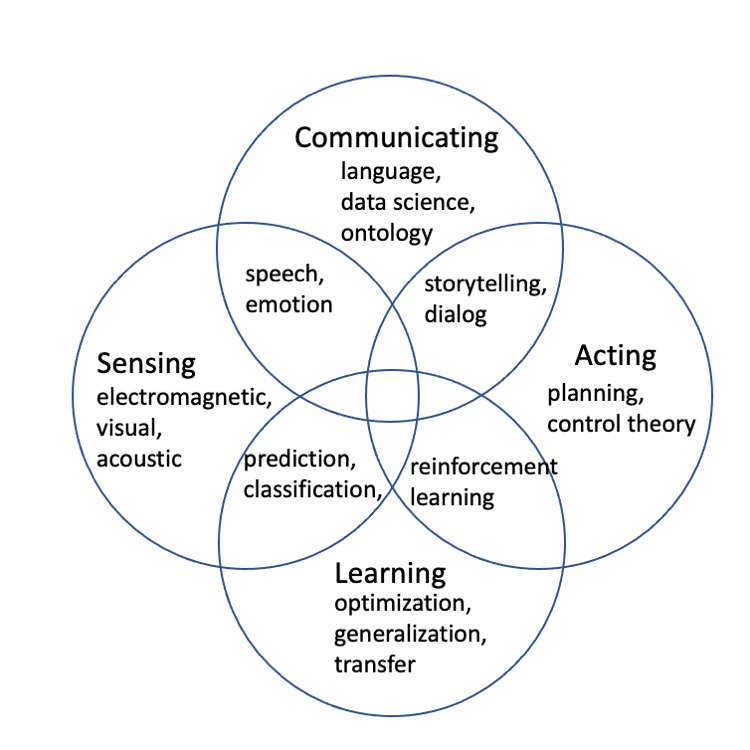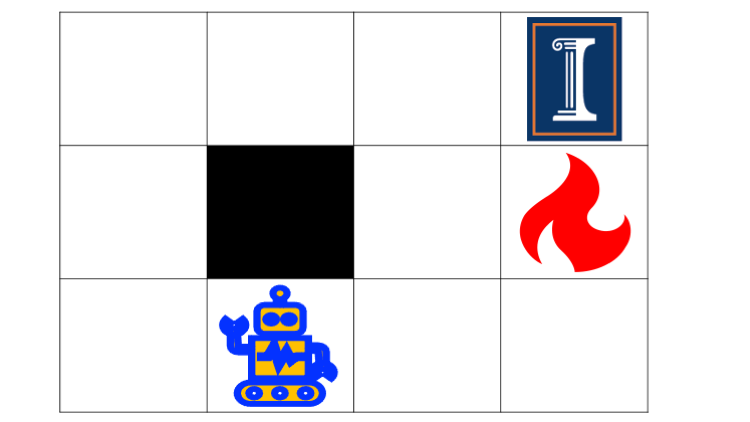Project¶
Four-credit students will write a final project.
Your writeups must be submitted using the templates of the IEEE Transactions on Computers. You will be graded on formatting.
Your writeups should be cumulative: the writeup for part 2 should be added to the end of the writeup for part 1, and so on. Each new page should add no more than 1 additional page of text, not counting figures, tables, titles and bibliography. Thus, for example, writeup 1 should be no more than 1 page + titles, figures, bibliography; writeup 2 should be no more than 2 pages + titles, figures, bibliography; and so on.
Each writeup will be submitted BOTH to a google drive (so your teammates can see it), and to Gradescope (so the Professor can mark it “done”).
Grading of part (a) submissions is based on scientific correctness (are all of your statements backed up by citations and/or by your own experiments?), clarity (is your language and formatting clear?), and creativity (have you chosen an interesting problem, and an interesting way to try to solve it?). For more information about how to write technical papers, see, for example, the IEEE Write Your Paper page. For part (b), you’ll be graded based on whether you seem to have made a serious attempt to offer constructive criticism to your teammates (destructive criticism will receive negative points). For more information, see, for example, the IEEE Ethics in Peer Review page.
Teammates will be assigned, immediately after submission of assignment 1(a), by some method yet to be determined.
Components of the Final Project¶
Intro: choose a problem; say why it’s interesting
Submit your own intro (26-Jan).
Review teammates’ intros (2-Feb)
Background: review three papers that studied your problem
Submit your own background section (9-Feb). Append your background section to the intro that you submitted two weeks ago; the result should be 1-2 pages (references and figures can extend onto a third page if you wish). Your intro can be revised, but it’s not necessary; grading this week will focus on the background section. Your background section should be four or more paragraphs: (Paragraph 1) Briefly describe of the current state of the art in your field, e.g., based on the titles of papers you found, what sub-problems do most papers cover? (Paragraph 2) Of the three main papers, describe the first one. What problem did they try to solve, what was their most interesting innovative contribution (it might be “interesting” because it’s related to what you want to do, or it might just be intrinsically interesting), and how well did it work? (Paragraph 3) Same thing for your second paper, (Paragraph 4) Same thing for your third paper.
Review teammates’ background sections (16-Feb)
Propose an algorithm that does something relevant for your problem, describe the algorithm clearly, and describe why the algorithm might work
Submit your own algorithm section (2-Mar)
Review your teammates’ algorithm sections (9-Mar)
Run an experiment. Describe experimental methods (dataset and performance metric) and results
Submit your own experiment section (23-Mar)
Review your teammates’ experiment sections (30-Mar)
Discuss the degree to which your experimental result is a success, a failure, or uninterpretable. In light of your experiment, and of the papers you reviewed, discuss possible next steps
Submit your own discussion section (13-Apr)
Review your teammates’ discussion sections (20-Apr)
Submit your final paper with revisions (27-Apr)
What to write about¶
In general, you should pick an area that interests you. But, you might ask, what are the “areas”? There are at least three ways to divide AI into topic areas.
Different definitions of intelligence. So, for example, some areas of AI focus on making a computer more rational (planning, reasoning). Some focus on making a computer more human-like (natural language processing, emotion). Some focus on making a computer more autonomous (sensors of all kinds, robustness to error).
PEAS: Performance (e.g., methods for optimization, methods for measuring performance, generalization error, computational considerations), Environment (agents on the internet, agents who interact with humans, robots who interact with humans, delivery drones, robots in environments where a human could never go), Actuators (hardware issues, configuration space of a robot, path planning, reinforcement learning), Sensors (audio, ultrasound, vision, infrared, 3d vision, radar, wifi, biomedical sensors, seismic sensors, mapping).
Application area: data science, biomedical imaging, automatic medical diagnosis, speech recognition, spoken-language translation, automatic story generation, purposive dialog agents, chat, automatic advertising, automatic topic detection, named entity recognition, syntactic parsing, data mining, fraud detection, anomaly detection, conflict resolution, genomics, preoteomics, scientific inference, automatic image generation, image style transfer, synthetic singing, automatic music composition
Here’s a highly biased and under-representative Venn diagram of some of the possible topics you could choose:

Places to look for relevant papers¶
Major conferences
Here is a list of some major conferences that you can scan to find more information about some of the topics suggested above.
- Core AI
AAAI, IJCAI
- Computer vision
CVPR, ICCV, ECCV
- Natural language
ACL, NAACL, EACL, EMNLP, COLING (All available at the ACL anthology web site.)
- Speech
ICASSP, Interspeech
- Machine Learning
NIPS, ICML, ICLR
- Robotics
ICRA, IROS
How to Review a Paper¶
In (b)-weeks, you will write one-page reviews of the papers submitted by three of your fellow students.
Each review should have a title, something like “Review of the introduction section of the paper …. by ….”
Your first paragraph should be with a one- or two-sentence summary of the content of the paper. This lets the author see what you considered to be the main idea of their paper. Sometimes, the author and the reader have different ideas about what’s important in a paper – that information can be useful to the author.
Your next one or two paragraphs should suggest ways in which the paper could be improved. For example (1) were some topics explained unclearly, so that you’re not really sure what the author was trying to say? (2) Would the paper be more interesting if the author went into more detail about one or more topics? (3) Are there logical arguments that contain gaps, where the argument jumps from one step to another without sufficient support in between? If so, what type of support might help to fill that gap?
Finally, if there are places where you would recommend modifications to improve grammar or style, please add these to the end of your review, in the form of a list.

